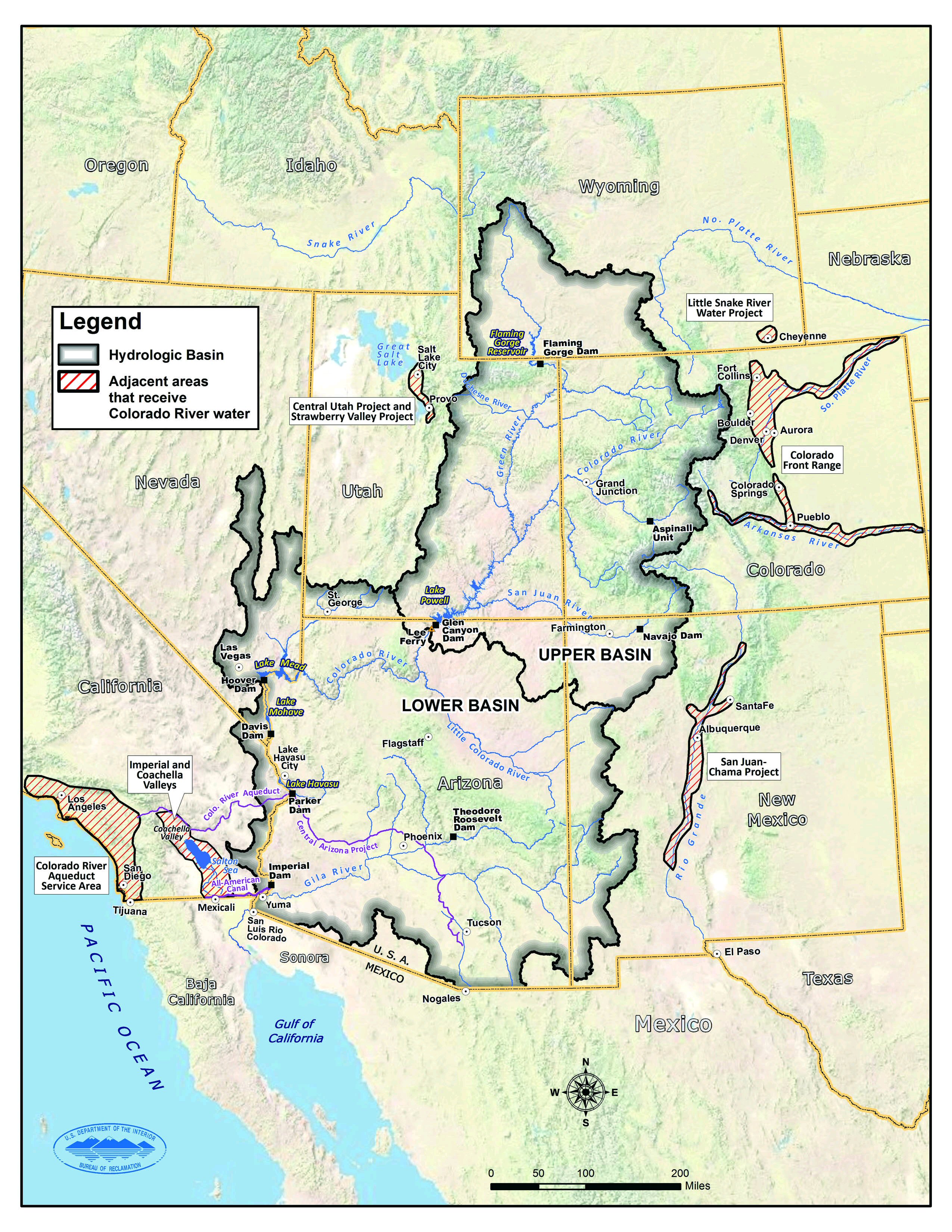
ST. GEORGE – Faced with declining water levels in Lake Mead and Lake Powell, water users in four Western states can get paid for leaving water in the upper Colorado River as part of a pilot program testing potential drought management plans. Water-reduction project proposals are still being accepted.

Water managers are testing the effectiveness of temporary, voluntary measures that could be used to keep the water level in Lake Powell above what is needed to maintain power production at the Glen Canyon Dam.
The Utah Division of Water Resources and the Upper Colorado River Commission are overseeing the “Pilot System Water Conservation Program,” which has been extended through 2017 – the third year of the project.
The program is studying the effectiveness of water conservation measures on Lake Powell water levels. The measures used could be part of a drought contingency plan for the Upper Colorado River Basin.
Participating water users have already saved about 3 billion gallons of water as a result of the program, information from the Division of Water Resources states.
Water districts, municipalities, farms, ranches and individuals can apply for the program, Utah Division of Water Resources spokesperson Joshua Palmer said in an email.
Bloomfield City, New Mexico; the Pueblo Board of Water Works in Pueblo City, Colorado; and the Rainbow Glass Ranch in Ferron Creek, Utah, are a few of the entities that have participated in the program so far, Palmer said.
“We hope to see a variety of proposals come in from Utah water users,” Utah Division of Water Resources Interstate Streams Engineer Robert King said in a statement. “We are still studying the benefits of the program and what kind of difference it can make.”
If accepted into the pilot program, municipal, industrial and agricultural water users will be paid for voluntarily reducing water usage.
Projects could include the reuse of industrial water, stopping or reducing irrigation of crops, recycling of municipal supplies, reductions in municipal landscape irrigation or other methods.
“They just need to show that they would forego diverting the water in 2017,” Palmer said.
Details
Applications can be found here. Proposals must be received by Nov. 30, although later submissions may be considered if funds remain.
For more information, contact Robert King by at 801-538-7259 or [email protected].
Email: [email protected]
Twitter: @STGnews
Copyright St. George News, SaintGeorgeUtah.com LLC, 2016, all rights reserved.
i guess something like this will be useless after the big pipe is up and running, lol
Well.. when it comes to being useless you should know eh ?
Not convinced that pipe will be carrying water.
This is a great project and an absolute necessity to an area that has issues from a long on going drought. It’s great to see people get involved in issues that effect the area and the people living in this area and look for solutions. This project has a lot of people working on it to make it work and have positive results. Thank you to all those involved Praise the Lord !